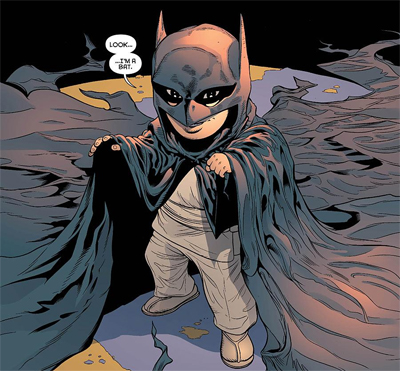This March sees the release of Batman vs. Superman. To celebrate, we’ll be looking at some iconic and modern Batman and Superman stories over the course of the month.
On paper, Grant Morrison and Rag Morales’ Action Comics should have been a slam dunk.
The title was announced as part of DC’s “new 52” relaunch, a resetting of the comic book giant’s continuity beginning in September 2011. Designed to revitalise the line, shoring up sales numbers and providing a clear point of entry, the “new 52” was clearly intended as a “jumping on” point for new and lapsed comic fans. It was bold and radical, an even greater departure for the company than their reboot following Crisis on Infinite Earths back in 1986. The comic book publisher gave themselves a blank slate.

Wow, he IS more powerful than a locomotive…!
In theory, this was a great idea; anything was possible and everything was on the table. In practice, the execution was more muddled; the massive experiment curtailed by a very conservative aesthetic. In many respects, the “new 52” felt like more of the same; familiar mid-tier talent working on familiar mid-tier ideas. The most interesting books were those that dared to do things differently; Scott Snyder inverting Alan Moore’s brilliant twist on Swamp Thing made for iconoclastic reading, as did Brian Azzarello’s ground-up reimagining of Wonder Woman.
In contrast, a lot of the line felt like hedging. Hellblazer was cancelled so that John Constantine could be dragged under the corporate umbrella in Justice League Dark, all in the name of coporate synergy. The Wildstorm characters were ported over into mainstream continuity, in spite of the fact that they were largely redundant or incompatible. Instead of courting either exciting new talent or industry veterans, the company had difficulty drawing top-tier talent. Scott Lobdell and Rob Liefeld were among the relaunch’s heavy hitters.

… And what was that about speeding bullets?
To be fair, there were bright spots. But the ideas and concepts that were interesting were frequently hobbled by the demands of the publisher. All-Star Western was diminished by having to tie to Gotham City continuity, while attempts at genre diversity in books like Demon Knights or I, Vampire were under-promoted. Emphasis was placed squarely on monthly print sales numbers, with little patience for books to grow their audiences whether online or through collected editions.
In spite of all the confusion and chaos of the relaunch, Grant Morrison writing Action Comics was the cause of considerable excitement. Morrison was one of few comic book writers who could legitimately be described as a superstar, arguably with a higher profile outside mainstream comics than executives Jim Lee and Geoff Johns. Having Morrison on a monthly book was a big deal, particularly a monthly book as important to the company’s legacy as Action Comics. (Then again, the relaunch also chose to put Tony Daniel on Detective Comics, so there’s that.)

Happily never after…
More than that, the book represented something of a homecoming for Morrison. Although the character of Superman had struggled with issues of relevance in the twenty-first century, Morrison had been the architect of one of the character’s most beloved stories. All-Star Superman is widely regarded as one of the best Superman stories ever published. Having its author writing a monthly book as part of the relaunch was a big deal. Following high-profile misfires like New Krypton or Grounded, it seemed like the perfect opportunity to put Superman back on the right course.
In many respects, Grant Morrison’s run on Action Comics typifies the sort of push-and-pull at the publisher as part of the relaunch. The great ideas smothered by corporate mandates, the tension between familiarity and novelty, the burden of expectation even while trying to chart a new course. For better or worse, Action Comics could be seen as the flagship of DC’s “new 52” initiative. This seems entirely appropriate, given the title’s historical significance to DC comics.

Running jump…
Continue reading →
Filed under: Comics | Tagged: Action Comics, continuity, dc comics, flashpoint, grant morrison, history, New 52, rags morales, superman | 22 Comments »







































